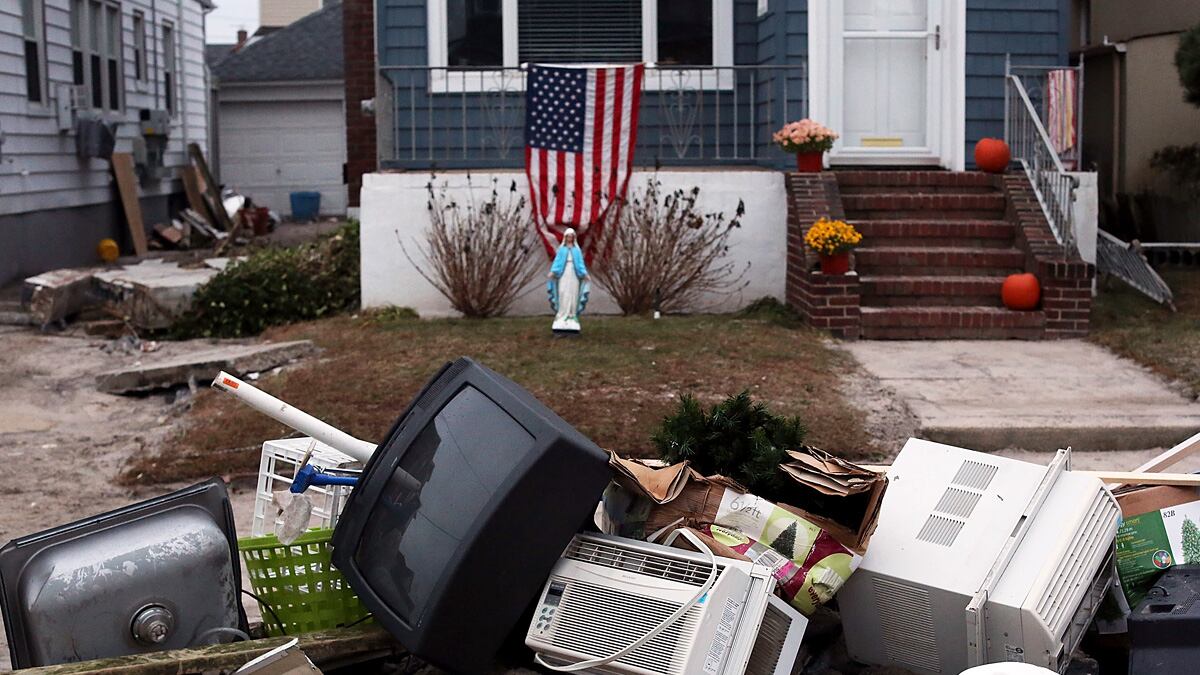In the resource-challenged world, the response to natural disasters progresses in predictable stages. First is the horror of the event—the earthquake, hurricane, or tsunami. Next comes a genuine outpouring of generosity worldwide. Third is the televisionization of the event with cameras galore, inside stories about small acts of bravery, harrowing rescues, heartbreaking loss; it is without question the best reality TV around (and unlike reality TV, it’s real). Then finally comes the sudden shivering neglect as people change the channel, even while locals die of dehydration or diarrhea or crush injuries. The public (not the victims) somehow determines it has reached “closure” and moves on to the next big event.

Here in the land of adequate resources, we go through the same first three steps of horror, help, and TV, but we have a different fourth act—one that hews to the sanctity of the American free-enterprise system. Our final step is not neglect—we can afford to fix things, as Sandy once again attests. No, our last act consists of a familiar parade of characters seemingly just loosed from the circus. Hawkers and hucksters, mountebanks and sleazeballs, each looking to spin the fresh tragedy into spools of gold (reserved for personal use). They are ready to show us how to slice and dice without tears, to julienne without bloody knuckles, to drill holes without a drill, to glue without slippage.
The lead example in the Sandy saga is the predictable appearance of teams of mold abaters: here and here for starters. Yes, mold—that slimy, amorphous crud that shows up when things get damp. You have some in your shower right now, I promise. The mediation experts already know the territory because of a controversial condition referred to as sick-house syndrome, purported to be the result of molds hidden in the house that elaborate dangerous toxins for those living there. The post-Sandy pros have arrived in their trucks with their cards and grim expressions, convincing, as best they can, the still-staggering locals to believe they have a problem they didn’t even know about. A problem that just might be worse than Sandy itself.
And right now they don’t have to push particularly hard. After all, before Sandy dominated the headlines, there were already headlines about fungal meningitis due to a mold called Exserohilum. In fact, when the FDA went into the infamous New England Compounding Center, the pharmacy linked to contaminated steroids that have killed more than two dozen people, and cultured the equipment, they found several different types of mold and other fungi. It was everywhere. The place was grossly contaminated by lots of living things—including the mold that ended up in the many patients tragically harmed by the outbreak.
But there is a substantial difference between the mold found in the spines of the 404 poor souls affected thus far and the mold that many people have in their walls, books, and carpets, the type that thrives in moisture and post-Sandy conditions. And it’s not the species of mold, either—that doesn’t matter at all, really. It’s where the mold is, anatomically. You could inhale Exserohilum all day long (in fact you may well be doing this), you could drink it, you could rub it onto your skin, and not be harmed. Consider this: people at NECC didn’t get sick, though we now know the place was crawling with mold. Nor did the doctor injecting the stuff or the other people in the room as the medical procedure was taking place.
No, to get sick, you had to have a large amount of the fungus injected directly into a small area of the back with a poor blood supply—the poor blood supply, which is advantageous to provide a depot for medications that won’t wash away quickly, is a disaster if an infectious microbe enters the space. Without a blood supply, there is an extremely limited capacity for the body to respond with a healing inflammatory response. Beyond those with anatomic inoculation, the only other persons at risk are those with immune systems severely compromised by such medical interventions as bone-marrow transplants. For completeness, one must also consider the large group of people—the hay-fever crowd—who are allergic to mold. Some are so reactive to mold that they develop asthma, though it’s cockroaches, not molds, that are driving the current epidemic of inner-city asthma in children.
In a fact-based society, the lessons of the fungal-meningitis outbreak would be used to quiet concern about any health risks due to the moldiness sure to follow Sandy. But as Ronald Reagan’s most famous Freudian slip has it, facts are stupid things. I suspect that rather than assurance, we will enter the Mold Wars era, where these slimy, villainous-looking microbes will take over for the more general “germ” as the object of public fascination and censure. In this role, however, they surely are miscast—now there’s a problem the Gipper could understand.





